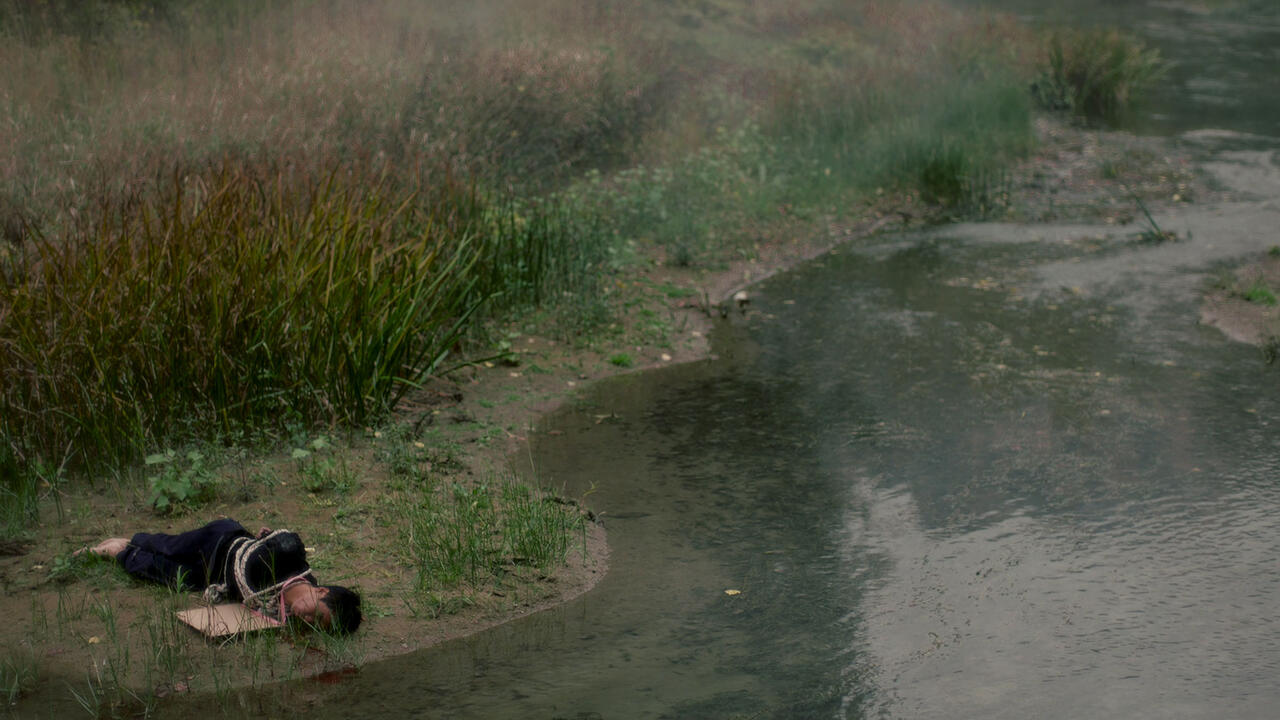Geng Yini
K11, Shanghai, China
K11, Shanghai, China

Geng Yini opens her solo exhibition at K11, ‘Perfect Duck Deep Pond’, with a playfully defiant gesture: a stuck out tongue. In Dirty Cabinet (2013) an oversized, textured rendering of this muscle protrudes from the cavity of a dingy bedside table. At once funny and gross, it is an apt welcome to Geng’s world, where unlikely protagonists such as ducks, bananas and bodybuilders star in perplexing painted montages and shrewdly constructed assemblages. Many pieces are embellished with pithy text fragments or Chinese folk sayings, which complicates their interpretation; the result is a body of work that alternately amuses, intrigues and disturbs.
The large-scale diptych Amazing Duck Deep Pond (2017) exemplifies Geng’s talent for turning negligible subjects into noteworthy ones. Here a gargantuan duck floats peacefully on a tiny pond amid bucolic surroundings complete with mountains and a sunset. With subtle differences in detail, the background landscape is mirrored, resulting in twin waterfalls that flank the fowl, while two painted characters – 惊奇 (amazing) – hover in the foreground on the right side. With its surreal subject, Rorschach-like setting and hyperbolic, incantatory text, the work seems to be attempting, not entirely unsuccessfully, to hypnotize its viewer.

In an equally bizarre tableau, Life Winners (2017), three characters play cards with an egg-headed figure whose boss status is literally inscribed on the back of his balding cranium. The players’ expressions range from relaxed to devious and a classic Chinese proverb translating as ‘life and death are determined by fate; rank and riches are decreed by heaven’ is inscribed within, setting the tone for the picture. The folk-wisdom pronouncement of preordination trumps any scheming taking place in the game. It is unclear whether the boss is the arbiter or benefactor of fate here, but it is surprising that such an ostensibly lighthearted scene broaches the weighty question of fate versus free will.
Geng’s works are generally goofy, sentimental or a mix of both but, at times, this is cut through by a more macabre sensibility. In Fault (2012) an opulent interior is rendered in an inviting, warm palette. A framed picture hanging on the wall features a masked face. The incongruous portrait, along with the addition of the word ‘fault’ scrawled in English across the painted surface, imbue the work with a menacing air. In another work, Black Hole I (2017), the artist manages to morph even fruit into something weirdly haunted. Two trompe-l’œil holes interrupt a canvas otherwise occupied entirely by blazing yellow bananas. It seems the dark ripening spots of the fruit have started to threaten the physical support of the picture. Two actual holes have also appeared in the wall that abuts the piece, creating the unnerving impression that the voids possess agency to impact the real.

Visually, the strategies in these paintings are far from novel: the montage format, the play between the illusory and the physical, and the repressed mundane that resurfaces as uncanny are all tropes familiar from surrealism and beyond. Yet, Geng’s eccentricities and the inclusion of cues particular to her environment bring these methodologies into less familiar territory. Certain conventions of social realism – with its schematically modelled figures, textured surfaces and earthy tones punctuated with more strident hues – reverberate in these canvases and enhance their folksy character. In addition, the way the texts recast these pictures brings to mind not only the Chinese tradition of embellishing paintings with poetic inscriptions but also the government-sponsored banners that, still today, punctuate everyday life in China. It is Geng’s ability to conjure such anomalous yet apropos associations that – beyond the dizzying visual fray – makes the works in ‘Perfect Duck Deep Pond’ so engaging.
Main image: Geng Yini, Perfect Duck Deep Pond, 2017, oil on canvas, 1.6 x 2 m. Courtesy: K11, Shanghai





















